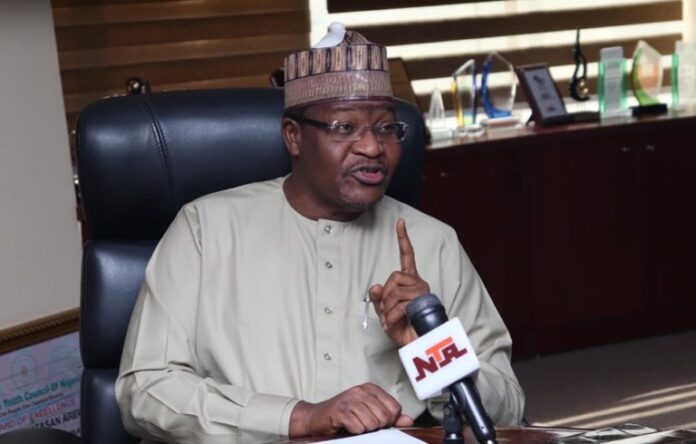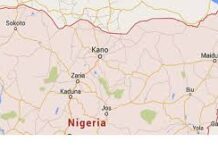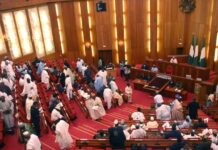Impact Of Pervasive Broadband On Digital Financial Services
TECH DIGEST – Researches have shown that the Internet and mobile phones have a strong positive relationship with digital financial inclusion. Adeyemi Adepetun writes on the push in Nigeria
Digital Financial Services (DFS) is a recent mobile-centric financial inclusion innovation in developing countries, Nigeria inclusive.
Using ubiquitous mobile phones as the means of service access, DFS provides the unbanked and underserved, many of whom live in rural areas with access to basic financial services provided by banks and non-banks such as mobile network operators (MNOs) and third-party DFS providers (DFSPs).
A study has shown that with mobile phones as the primary access mechanism for services, access to DFS is highly dependent upon the degree and quality of mobile coverage offered by MNOs. User interfaces (UIs) for access to DFS are mostly dependent on the type of mobile coverage available which in many cases in the developing world is via slower (narrowband) second generation (2G) GSM technology.
Lately, faster broadband, 3G and 4G mobile coverage is available in most developing world countries, but is mostly limited to urban and peri-urban areas and along national road corridors.
The study finds that the type of mobile coverage provided has a significant effect on the DFS UI and the type of mobile phone that can be used for DFS access.
Today, feature phones and Unstructured Supplementary Service Data (USSD) transactions continue to be the choice for the vast majority of (mobile money) users. Faster mobile broadband technologies are optimal for smartphone use or hybrid smartphones in feature phone format which can provide superior and more intuitive graphical user interfaces.
Indeed, fostering digital financial inclusion with pervasive broadband formed the fulcrum of the fifth yearly The Bullion Lecture organised by the Centre for Financial Journalism, where the Executive Vice Chairman of the NCC, Prof. Umar Danbatta, spoke as the guest lecturer. He used the forum to deepen the discussion and explain efforts the country was championing to drive financial inclusion
What is digital financial inclusion?
In a 2016 report by the International Telecommunication Union (ITU), Digital Financial Inclusion, Scope and Policy, digital financial inclusion (DFI) is captured basically as ‘the use of Information and Communication Technology and other non-bank retail channels to extend the delivery of financial services to the unbanked.’
Digital financial inclusion, thus, has the following characteristics: no bank account needed; use of agents for cash in and cash out; and use of mobile handsets and other digital means for transactions.
Today, digital financial services are offered through the use of a mobile phone to access financial services (with or without a bank account) and to execute financial transactions. Mobile money, mobile insurance, mobile credit and mobile savings are mobile financial services. Digital financial inclusion, therefore, involves the deployment of cost-saving digital means to reach currently financially-excluded and underserved populations with a range of formal financial services suited to their needs that are responsibly delivered at a cost affordable way to customers and sustainable for providers.
The World Bank report has it that, with the prospect of reaching billions of new customers, banks and a widening array of non-banks have begun to offer digital financial services, leveraging access to mobile phones, for financially excluded and underserved populations.
Today, mobile money has been most successful, as one of the means to drive digital financial inclusion, replacing cash transactions for domestic remittances, such as urban workers sending money to rural families. The fastest-growing mobile money service is cross-border, led by remittances but with the potential to support trade and regional integration. In Central America, Colombia, Kenya, Mexico, the Philippines and Tanzania, more remittances are sent by mobile phones than in cash.
Available records show that digital financial services, including those involving the use of mobile phones have now been launched in more than 80 countries around the world, including Nigeria, with some reaching significant scale.
Digital financial inclusion in Nigeria
Danbatta explained that with a population of over 190 million people, research showed that 73.2 million adults, representing 41.6 per cent of the adult population in Nigeria, are financially excluded. However, he said Nigeria remains one of the countries identified by the ITU to have developed policy directions towards deepening financial inclusion to address the challenge of access to formal financial services.
Going memory lane, the NCC EVC said in 2012, the Central Bank of Nigeria (CBN) adopted the National Financial Inclusion Strategy (NFIS). The Strategy defined a set of targets for products, channels and enablers of financial inclusion. The Key Performance Indicators (KPIs) were defined, based on the various dimensions of financial inclusion, including access, usage, affordability, appropriateness, financial literacy, consumer protection and gender.
In line with the 2012 NFIS monitoring plan, a review was carried out from October 2017 to June 2018 based on research reports, data analysis and stakeholder engagements. The exercise aimed to understand the state of financial inclusion in Nigeria, assess past approaches and lessons learned to prioritise the most critical interventions to achieve the NFIS objectives.
How pervasive broadband is aiding Nigeria’s digital inclusion
Since the coming of Danbatta at the helms of affairs at NCC, the Commission has been involved in the actualisation of the Federal Government’s financial inclusion target of 20 per cent exclusion or 80 per cent inclusion by the year 2020.
However, a recent report by EFInA indicates that even though its data showed that more people have become financially included, the financial inclusion pace was, however, not matching the country’s population growth rate.
Therefore, to achieve an accelerated financial inclusion target that the country desires, even as the population grows, technology and more importantly, Danbatta said broadband has to play a massive significant role and he sees technology helping to democratise access. Today, broadband penetration has increased significantly, moving from six per cent in 2015 to 42.9 per cent as of January 2021, where some 81.9 million Nigerians now have access.
Getting to this level, the NCC embarked on various regulatory initiatives that have continued to increase access to telephone lines and improve access to high-speed Internet or broadband. This is in line with the Commission’s mandate of ensuring universal access to telecoms services in the country consistent with the ITU’s goal of achieving digital inclusion, globally.
Foremost amongst these regulatory initiatives, is the implementation of the Open Access Model for infrastructure deployment through the competitively selected Infrastructure Companies (InfraCos) called the InfraCo Project.
The InfraCo initiative is expected to provide, at a minimum, broadband fibre and connectivity to every Local Government Areas (LGAs) of the Federation, totaling 774 fibre Points of Access (PoAs) with a minimum speed of 10 Gbps which will translate to, at least, 38,296km of Optic Fibre Cable (OFC) to the transmission over the next years.
So far, the Commission has licensed six of the seven InfraCos to implement this project and it is intended that the presence of fibre point of access in each LGA will not only spur development, lower cost of entry for telcos and bring about innovative services and applications, but also, improve the conditions of living in the rural, urban and semi-urban areas, especially with respect to access to financial services.
The InfraCo Project can be considered as the beginning of the “Next Level” journey towards achieving the 120,000km target of fibre connectivity set by the current administration.
According to Danbatta, NCC recently started a process to strategically review the InfraCo framework and its funding options towards ensuring effective implementation of the national fibre project. He informed that when fully implemented, it will ensure robust and pervasive broadband infrastructure to drive availability, accessibility and affordability of financial services.
The NCC also provided the requisite infrastructure, connectivity and capacity to interconnect four Internet Exchange Points (IXPs) in Lagos, Enugu, Port Harcourt and Kano to localise some of the internet traffic in Nigeria and encourage the creation, hosting and interchange of data within Nigeria.
Lots still need to be done
Corroborating Danbatta’s views, SystemSpecs’ Executive Director, ‘Deremi Atanda, said there is a need for the country to continue to focus on those things regarded as national issues.
“If we say financial inclusion is an opportunity to bring the economically disadvantaged persons into the economic network that can improve their lives, then it should be at the forefront of all we do,” Atanda said.
He said that although the CBN, the NCC and other relevant government agencies have done a lot in improving financial inclusion, there is still a lot to be done.
Atanda noted that clear answers to the hard questions must be provided: “How do we leverage technology to make sure that disadvantaged Nigerians can have their quality of lives improved and a sense of belonging as Nigerians? What are the strategies to ensure that the average Nigerian can be economically empowered?” he asked.
Strongly recommending that stakeholders begin to more actively consider the country’s burgeoning FinTech community as a key contributor to the attainment of the desired financial inclusion goals, he said the digital economy is an enabler of social transformation and economic empowerment.
Further in his comments, Atanda analysed the interception between broadband penetration and financial inclusion as well as the consequence on socio-economic improvement: “As we deepen the collaboration between stakeholders within and outside government, we need to know what has worked, what is not working and what needs to be done differently.”
“I think there is still a lot more to be done. The engagement of regulators and non-governmental stakeholders should be very clear and be continuously progressive,” Atanda added.
















